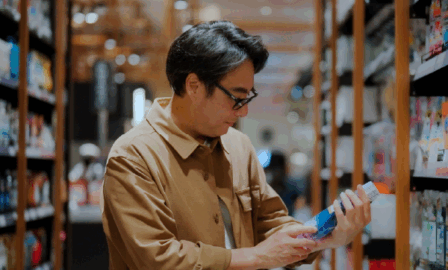What is Hyperlocalism, and What Does it Mean for Your Marketing Strategy?
In our fast-paced and ever-changing market, understanding consumer motivations and preferences, specifically for younger generations, is key for organizations looking to remain profitable and relevant. For many CP companies, the growing trend of hyperlocalism is one way to achieve that success. So, what is hyperlocalism?
What is Hyperlocalism?
Hyperlocalism refers to a strategy that targets potential consumers within a specific geographical location. It aims to provide personalized products tailored to meeting the needs of consumers in that specific area. Hyperlocalism can cater to a town, neighborhood, or even a neighborhood block.
Consumers are increasingly wanting to shop locally, with a report discovering that 97% of individuals are searching online to find a local business. As this focus on local shopping accelerates, competitive organizations must ensure that hyperlocalism is incorporated into their marketing strategy.
This marketing strategy can create more relevant and customized experiences, establishing a strong relationship between consumers and businesses. Larger organizations can leverage these tactics to strengthen personal connections between consumers and their brands. Larger chains, however, should understand that these same tactics are equally compelling to smaller businesses and perhaps even more effective.
Who Shops Hyperlocal?
The hyperlocalist movement caters to a consumer base that values community and sustainability, so the demographic of consumers across locations can vary. Typically, hyperlocalism attracts consumers who are young, from more urban areas, and are high-income individuals. Hyperlocal products can be more expensive, as they’re more sustainably distributed, so individuals with lower incomes – or even those in rural areas – aren’t normally the target demographic.
Fueling this marketing trend is not only an interest in supporting sustainability or community, but also just general convenience. Consumers are increasingly adding “near me” to their shopping searches. In fact, according to Google, mobile questions looking for “near me” and “where to buy” grew by 200% in recent years. Consumers are looking for easily accessible products that are catered to their specific needs – and for those looking for convenient, sustainable, or local products that are right around the corner, hyperlocalism can meet those demands.
Community Engagement
While at one-point companies strived for a global big business appeal, the popularization of consumers wanting to shop locally means that businesses must find ways to appeal to that preference. As a result, we’re seeing big brands finding ways to engage with communities through name recognition, such as with Oreos, Ritz, Triscuit, and Trident. These brands have explored location-based advertising targeting specific cities and aligning their efforts with city-wide community initiatives. More specifically, Ritz Bits recently sponsored over 1,000 youth soccer teams across the country, building positive relationships with team parents throughout the process.
Oreo has also had hyperlocalist campaigns launching flavors like green tea and pineapple in certain regions appealing to specific locations of shoppers. They have also had certain packaging designs specified to certain events and influencers like partnering with K-pop band BTS in Korea. This local engagement with the community establishes a more personal connection with consumers. Some additional examples of hyperlocalism marketing include big food manufacturers connecting with local farmers or collaborations with local brands.
It’s important to note, though, that this tactic isn’t just reserved for big businesses. It’s also a great way for smaller local businesses to further tap into their community, like through farmers markets or co-ops.
Looking Ahead
Hyperlocalism will continue to be a growing marketing strategy as big and small businesses tap into a consumer base that seeks greater personalization. By targeting potential consumers within a specific geographical location, businesses can provide customized products and services that cater to the interests of local communities. While hyperlocalism still favors a younger and more affluent population as of now, it’s a promising approach to attracting and retaining consumers. As the market continues to evolve, understanding consumer preferences, especially among younger generations, will be crucial for businesses to stay competitive and successful.
If your organization is interested in exploring ways to harness the momentum of the hyperlocalist movement, our team of FMCG experts would love to connect!
Subscribe to Clarkston's Insights
Contributions from Leah Harding



